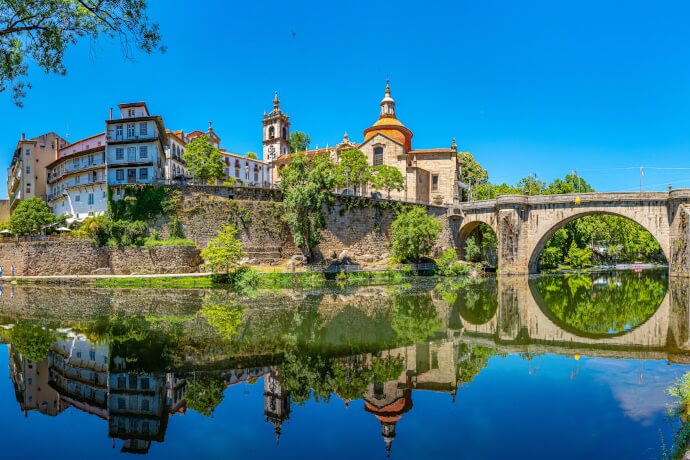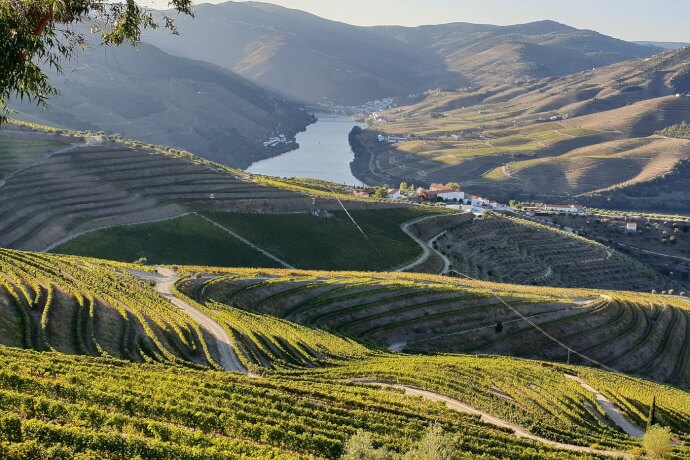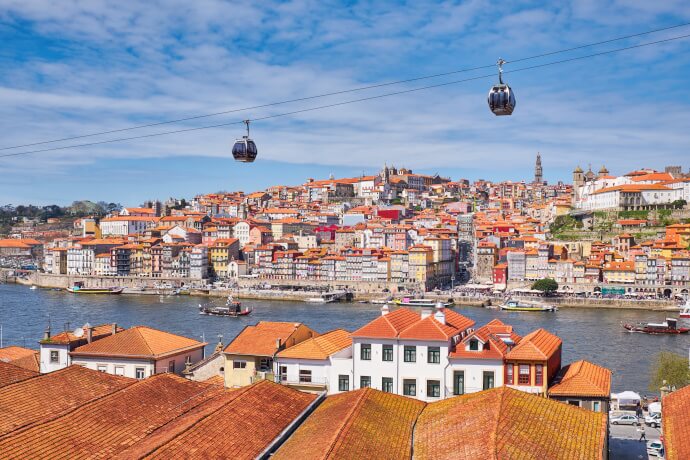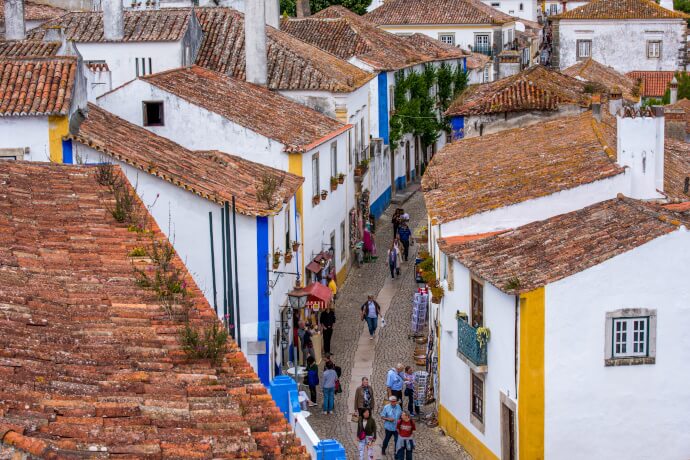Welcome to the enchanting Portuguese Art Route, where the landscapes come alive with the echoes of poetry, strokes of brushes, and pages of timeless literature. This journey takes you through a Portuguese cultural heritage where each town is intimately linked to the life and work of an influential artist who has left an indelible mark on the nation's cultural tapestry.
From the north in the Douro Valley to the south region of Alentejo, with stops in the lively cities of Porto and Lisbon and some unknown gems, each step is an invitation to unlock the secrets of Portugal's cultural treasures from top to bottom. Join us as we explore 8 charming towns that have played muse to some of the country's most influential artists. It's more than a journey, it's a celebration of Portugal's artsy soul!
Amarante and Amadeo de Souza-Cardoso
In northern Portugal, an hour away from Porto, the quaint town of Amarante is associated with one of Portugal's prominent modernist painters, Amadeo de Souza-Cardoso.
With its picturesque setting and historic bridges, Amarante exudes an old-world charm that captivates visitors. The São Gonçalo Bridge, an iconic structure crossing the Tâmega River, connects the two sides of the town. The medieval churches, the traditional houses with wrought-iron balconies, and the cobblestone streets contribute to its timeless appeal. The town is also known for its vibrant market square, where locals and visitors alike gather to experience the lively atmosphere, sample local delicacies, and explore the surrounding shops.
Born in Amarante in 1887, Amadeu de Souza-Cardoso emerged as a pioneer of modernist art in Portugal during the early 20th century. His artistic journey took him from the serene landscapes of Amarante to the avant-garde circles of Paris. His work reflects influences of Cubism, Futurism, and Orphism, making him a trailblazer in the Portuguese art scene. His paintings are characterized by bold colours, geometric shapes, and a dynamic energy that transcends traditional artistic boundaries. Souza-Cardoso's artistic evolution in Paris exposed him to influential figures like Amedeo Modigliani and Fernand Léger, further shaping his avant-garde sensibilities.
The Amadeo de Souza-Cardoso Museum in Amarante is a testament to the artist's enduring influence. The museum houses a significant collection of his paintings, drawings, and personal artefacts, providing visitors with a glimpse into the creative mind of this visionary artist.
Baião and Eça de Queirós
In the peaceful landscapes along the Douro River, Baião stands as a tranquil haven known for its natural beauty, historic charm and association with one of Portugal's literary giants, Eça de Queirós. The rolling hills and the terraced vineyards of the Douro Valley, a UNESCO World Heritage Site, have inspired artists and writers for centuries.
José Maria de Eça de Queirós spent a considerable portion of his childhood in Baião, where his family owned an estate. Born in 1845, the writer is celebrated as one of Portugal's most prominent novelists and a key figure in 19th-century European literary realism. His novels, including "The Maias" and "The Crime of Father Amaro", are revered for their sharp social commentary, satirical wit and exploration of the human condition. Eça de Queirós was a keen observer of Portuguese society and his works often critiqued the societal norms and political landscape of his time.
Baião proudly embraces its association with Eça de Queirós and you can explore the writer's childhood home, which has been transformed into a museum. It offers insights into the author's life, his literary contributions and the historical context that influenced his work. Stroll through Baião's streets, visit the local landmarks mentioned in Eça de Queirós's novels and be part of the ambience that inspired the writer's vivid descriptions. The town's connection to Eça de Queirós has turned it into a destination for literary tourism, allowing it to trace the footsteps of the acclaimed novelist.
Porto and Manoel de Oliveira
The vibrant and historic Portuguese city of Porto, which pulses with cultural richness and architectural splendour holds a special connection with the world of cinema, notably through the acclaimed Portuguese filmmaker Manoel de Oliveira.
Porto boasts a captivating blend of medieval charm and contemporary vitality. The city's historic centre, a UNESCO World Heritage Site, is a labyrinth of narrow alleys, grand churches, and ornate tile-adorned buildings. From the bustling Mercado do Bolhão to the serene Livraria Lello, one of the world's most beautiful bookstores, Porto offers a plethora of experiences. The iconic Dom Luís I Bridge spans the Douro River, connecting Porto to the neighbouring city of Vila Nova de Gaia, where centuries-old wine cellars house Portugal's famous port wine.
Born in 1908 in Porto, Manoel de Oliveira is considered one of the most enduring and influential filmmakers in the history of cinema. His career spanned over eight decades, and he continued to create thought-provoking films well into his 100s. Oliveira's films are known for their philosophical depth, poetic storytelling, and a unique blend of realism and experimentation. His dedication to the craft earned him international acclaim and numerous awards, including the prestigious Palme d'Or at the renowned Cannes Film Festival.
Once in Porto, you can explore the city's cinematic heritage through the Cinemateca do Porto, which often hosts screenings of Oliveira's films, providing an opportunity to delve into the artistic brilliance of this cinematic maestro.
Constância and Luís de Camões
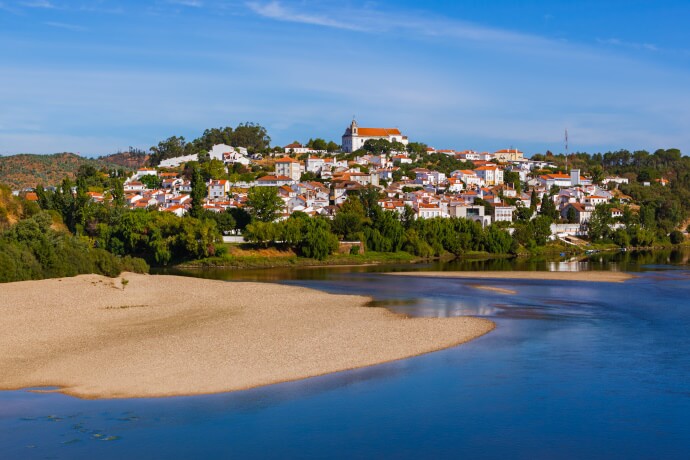
In central Portugal, around Tomar and Fátima, Constância emerges as a charming town that seamlessly intertwines natural beauty with a rich literary heritage sharing a special connection with one of Portugal's literary luminaries, Luís de Camões.
This town enchants visitors with its picturesque landscapes and historic charm. Constância is adorned with quaint houses, cobbled streets, and squares that exude a tranquil ambience. The convergence of the Tagus and Zêzere rivers nearby creates an idyllic setting, accentuated by lush greenery and the whispering sounds of flowing water. The Almourol Castle, a medieval fortress perched on a small island in the middle of the Tagus, adds a touch of mystique to Constância's surroundings.
Luís de Camões, born in 1524, is celebrated as Portugal's national poet and one of the most significant figures in Portuguese literature. His epic poem, "Os Lusíadas" (The Lusiads), stands as a masterpiece that chronicles the heroic deeds of the Portuguese during the Age of Discovery. Camões's poetic prowess, marked by rich language and profound philosophical reflections, has secured his place as a literary giant.
Constância proudly embraces its literary heritage, and Luís de Camões's association with the town adds a poetic layer to its cultural tapestry. The town's ties to Camões are reflected in the natural beauty that inspired the poet during his travels through Portugal. Explore the Luís de Camões House, where the poet is believed to have spent some time.
Óbidos and Josefa D'Óbidos
Located on a hilltop, just a short drive from Lisbon, Óbidos is a treasure trove of history, culture, and art. Surrounded by well-preserved medieval walls that encircle the town, you feel transported to a bygone era. The whitewashed houses adorned with colourful flowers, the historic castle, and the views of the surrounding countryside all contribute to the town's enchanting ambience. The medieval charm of Óbidos is further enhanced by its festivals, literary events, and lively street fairs.
One of the notable figures associated with this charming town is the Baroque artist Josefa d'Óbidos, whose contributions have left an indelible mark on Portugal's artistic heritage. Born in 1630 in Seville, Spain, under the name Josefa de Ayala Figueira, she moved to Portugal at a young age. Here, Josefa would go on to become one of the most significant Baroque painters of her time. Her association with Óbidos earned her the appended name, honouring her birthplace.
Known for her religious and still-life paintings, Josefa d'Óbidos displayed a unique style that combined naturalism with a delicate touch of mysticism. Her works often featured rich colour palettes, intricate details, and a profound emotional depth. Josefa's religious paintings adorned churches and convents across Portugal, earning her recognition and patronage from the Portuguese royal family. In Óbidos, you can find some of her works in Santa Maria Church and the City Museum.
Cascais and Paula Rego
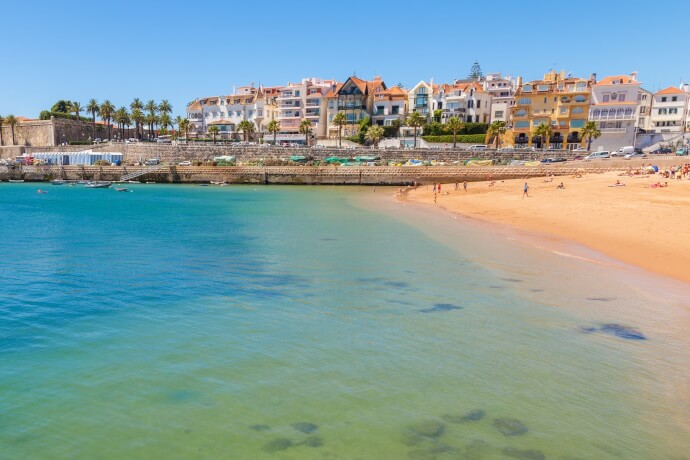
Once a humble fishing village just 45 minutes from Lisbon, Cascais has evolved into a sophisticated town in the sun-kissed coastline of Portugal. Its winding cobbled streets, whitewashed buildings and vibrant marina create an appealing ambience. The town's historical landmarks, such as the Citadel and the Santa Marta Lighthouse, stand as testaments to Cascais's rich past.
Within this idyllic setting, Cascais is also associated with one of Portugal's most renowned contemporary artists, Paula Rego, whose innovative and emotive works have left an indelible mark on the international art scene. Born in Lisbon in 1935, Paula Rego is celebrated for her distinct and emotionally charged artistic style. A figurative artist with a penchant for storytelling, Rego's work often explores themes of feminism, family dynamics and societal norms. Her paintings, drawings and prints are marked by a powerful narrative quality, employing a unique visual language that combines realism with elements of fantasy. Her international acclaim grew steadily throughout her career, with retrospectives held in major art institutions, including the Tate Modern in London. Her contribution to the art world was recognized with numerous awards and honours, solidifying her status as one of the most influential contemporary artists.
Do not miss the Paula Rego House of Stories, a museum dedicated to the artist which offers a comprehensive view of Rego's life and work, providing a captivating journey into the mind of this visionary artist.
Lisbon and Fernando Pessoa
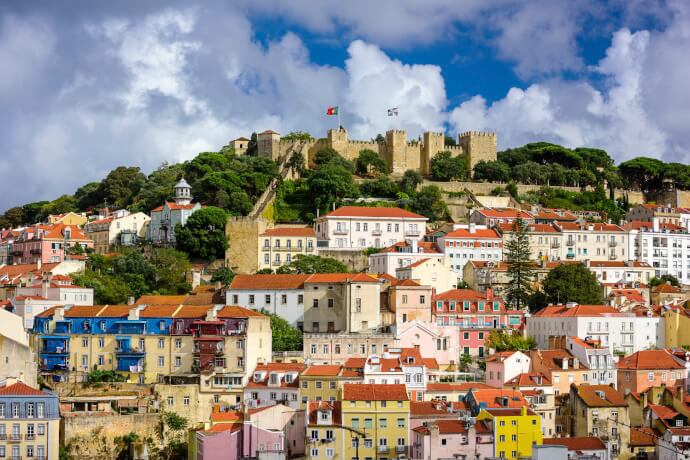
Perched on seven hills overlooking the Tagus River, Lisbon stands as a city that breathes history, culture and artistic vibrancy. Within the labyrinthine streets and ancient alleys of Portugal's capital, one finds a deep connection to literature, particularly through the influential figure of Fernando Pessoa, a literary genius whose works continue to shape the Portuguese literary landscape.
Born in Lisbon in 1888, Fernando Pessoa is regarded as one of the most significant literary figures in the Portuguese language. Pessoa's work is characterized by its diversity, as he wrote under multiple heteronyms, each with its own distinct voice, style and worldview. His poetry delves into profound philosophical reflections, existential musings, and a keen exploration of the human experience. Pessoa’s intellectual depth and literary innovation have earned him a revered place in Portuguese literature and on the global literary stage.
Lisbon served as a muse for Pessoa, influencing many of his works. The city's vibrant streets, the melancholy of its Fado music and the contemplative atmosphere find echoes in Pessoa's verses. The café culture, which has long been a part of Lisbon's social fabric, is reminiscent of the intellectual gatherings Pessoa participated in during his time. Some of the notable places associated with Pessoa are the Brasileira Café and the Martinho da Arcada, both historic gathering spots for intellectuals and artists. In the Campo de Ourique neighbourhood, where Pessoa lived, the Casa Fernando Pessoa is a museum dedicated to the poet's life and work.
Vila Viçosa and Florbela Espanca
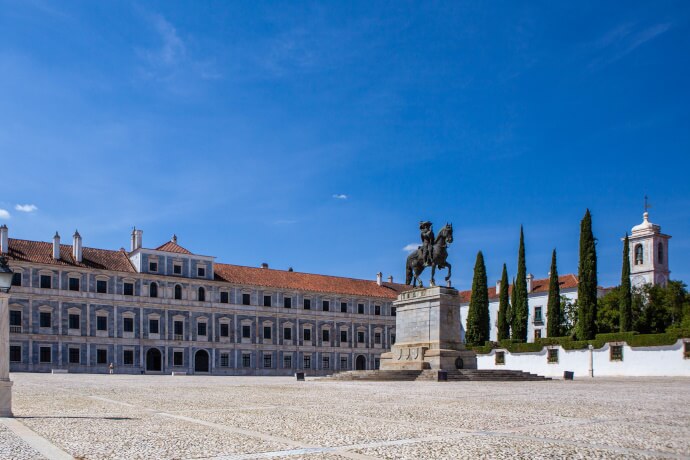
In the heart of the Alentejo region, Vila Viçosa unfolds as a town steeped in regal history and adorned with architectural splendour. Often referred to as the "Princess of Alentejo", Vila Viçosa boasts a rich heritage that is closely intertwined with Portuguese royalty. The town is crowned by the majestic Ducal Palace of Braganza, a grand edifice that served as a residence for the House of Braganza, one of Portugal's most influential noble families.
Within its historic walls and palace grounds, Vila Viçosa also holds a poignant connection to one of Portugal's most celebrated poets, Florbela Espanca, whose verses echo through the calm landscapes. Born in Vila Viçosa in 1894, Florbela Espanca emerged as a prominent voice in Portuguese poetry during the early 20th century. Her verses, marked by a profound exploration of love, passion, and the complexities of the human soul, garnered both admiration and controversy. Espanca's lyrical expression and unapologetic embrace of sensuality set her apart as a poet who fearlessly delved into the depths of emotion.
Vila Viçosa's romantic landscapes, the historical allure of the Ducal Palace and the serene beauty of the Alentejo region all find resonance in Espanca's verses. Exploring Vila Viçosa, you can trace Florbela Espanca's footsteps through historic sites, including the house where she was born. The poet's presence is commemorated with a statue in the town square, offering a tangible connection to her enduring legacy.
Ready for a dose of creativity, history, and cool destinations?
Embrace this experience that sweeps you through Portugal's artistic vibes, travelling through mesmerizing destinations, each intricately tied to the stories and creations of artists who have woven an unforgettable tapestry into the nation's cultural soul. We can help you prepare for this amazing artistic adventure where art is felt, experienced and celebrated!


